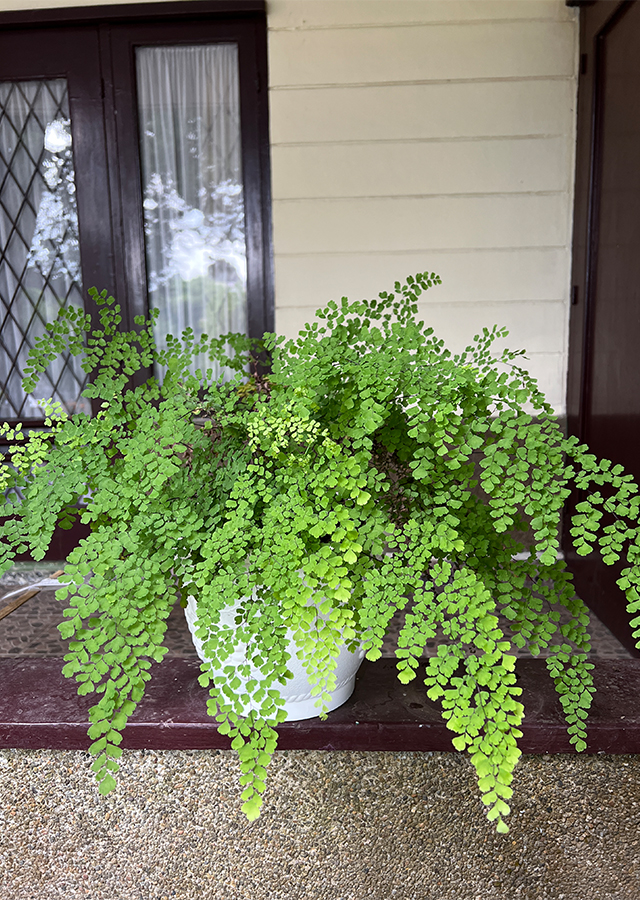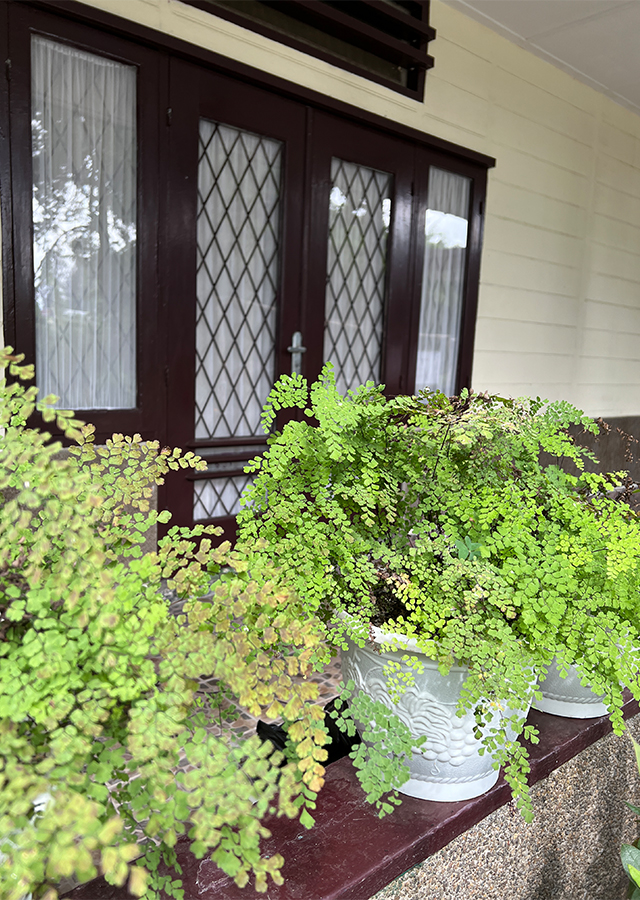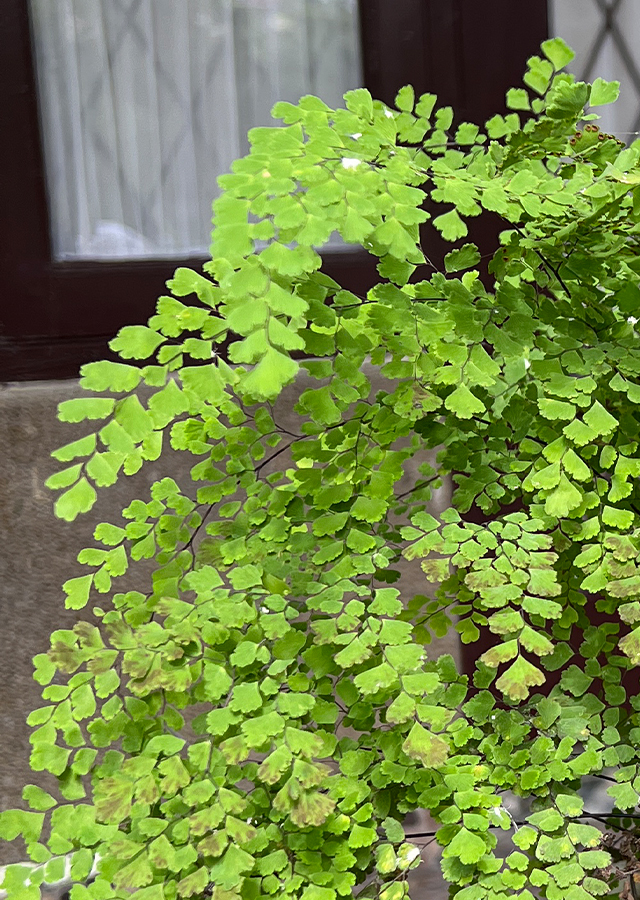Delta Maidenhair Fern
Adiantum raddianum C.Presl
Pteridaceae
Location in our garden
Principal



Synonym
Adiantum aemulum T.Moore
Adiantum baenitzii Rosenst.
Adiantum cuneatum Langsd. & Fisch.
Habitus
Fern. Annual fern, grows up to 60 cm high
Part Used
Leaves
The Whole Plant
Growing Requirements
Need Shade
Habitat
Riverbanks
Forest
Coastal
Roadside
Overview
A. raddianum is a delicate fern native to tropical and subtropical South America. The plant has become naturalized in various tropical and subtropical islands and is considered to be invasive in Hawaii and French Polynesia. The fern readily spreads and becomes locally abundant. Adiantum radianum is a fern plant used in popular medicine by several ethnic groups from various South American countries.
Vernacular Names
Capillaire (French), Frauenhaarfarn (German), Snittadiantum (Sweden).
Agroecology
In its native range, in tropical and sub-tropical South America, from Mexico down to Argentina, the fern is found from 0 to 4,000 m. In Hawaii, the fern occurs on all major islands and ascends from sea level to 4,400 m. On the Azores it is found on all islands except Terceira and Corvo and ascends to 400 m. The fern grows best in damp and shady places but does not tolerate very heavy shade. It is found in a wide range of habitats including forest floors, rock crevices, walls, roadside banks, river banks, coastal cliffs and basalt banks along trails and streams.
Morphology
- Roots - fibrous.
- Rhizome - the rhizome and the bases of the frond stalks are covered with dark-brown scales of less than 1 mm length.
- Stems (fronds) - fronds are arched to erect, 10-50 cm long and 6-20 cm wide, and triangular in shape. Frond stalks and axes are dark reddish-brown to blackish and shining. The frond stalk is usually longer than the lamina.
- Leaves - laminas are 3-4-pinnately divided, with the ultimate segments delicate, herbaceous and up to 1 cm wide. Ultimate segments are wedge-shaped and have slender red-black stalks. Segments of sterile fronds, if present, are larger than fertile fronds.
- Spores - U'-shaped and arranged either at the edge of veins or at their tips and less than 4 mm wide. Each sorus is covered with a pale or whitish membrane (indusium).
Cultivation
Saplings that are big and strong can be separated and planted in their own pots. As with other ferns, it can also be propagated using spores. Fertile leaves with ripe sporangium are ripened for a day and the released spores are spread on sterile and moist media and then covered with clear plastic. The media container is then placed in a tub filled with water as high as 1 cm from the bottom of the pot to retain moisture. After 2 weeks the spores will germinate and develop into a prothallus (heart shape). After growing into perfect spikes, the stems can be transferred to individual pots for better growth.
Chemical Constituents
Triterpen (filicene dan filicenal), isohopane dan neohopane [Neohop-12-eno; Neohop-18-en-12a-ol; 13-Epineohop-18-en-12a-ol; Neohop-13(18)-en-19a-ol; Neohopa-11,13(18)-diena], Norhopana (Trisnorhopane; Isoglaucanone; Glaucanol B asetat; 21-Hydroxy-30norhopan-22-ona; Isoadiantol B) Fernano[Fern-9(11)-en-25-ol; Pakis-9(11)-ena; Pakis-7-en-25-ol; 7-fernena; 5-Norfern-7-en-10b-yl format; 7alfa,8alfa-Epoxyfernan-25-ol 7b,25-Epoxyfern-8-ena; 7 beta,25-Epoxyfern-9(11)-en-8 alfa-ol], Adiane, dan Filicane[Adian-5-en-3a-ol; Adian-5-en-25-ol; Filicenal; 4,23-Bisnor-3,4-secofilic-5(24)-en-3al; 4,23-Bisnor-3,3-dimetoksi-3,4-secofilic-5(24)-ena], flavonoid (kuersetin, kaempferol, 3-glukuronida, astragalin).
Traditional Medicinal Uses
- Traditionally it is used as an analgesic, expectorant, and diuretic.
- Also for the treatment of digestive problems.
Part Used
Reference Sources
- Royal Botanic Gardens. 2021. Adiantum raddianum C.Presl. https://powo.science.kew.org/taxon/urn:lsid:ipni.org:names:17012580-1#descriptions. 15-05-22.
- CAB International. 2019. Adiantum raddianum (delta maidenhair fern). https://www.cabi.org/isc/datasheet/3237. 15-05-22.
- Flora Fauna Web. 2022. Adiantum raddianum C. Presl. https://www.nparks.gov.sg/florafaunaweb/flora/3/4/3497. 15-05-22.
- Rafael Corrêa Prota dos Santos ReinaldoIvanilda Soares FeitosaAugusto César Pessôa SantiagoUlysses Paulino Albuquerque. 2018. Adiantum raddianum C. Presl. Medicinal and Aromatic Plants of South America pp 89-96. Brazil. DOI: 10.1007/978-94-024-1552-0_6.

